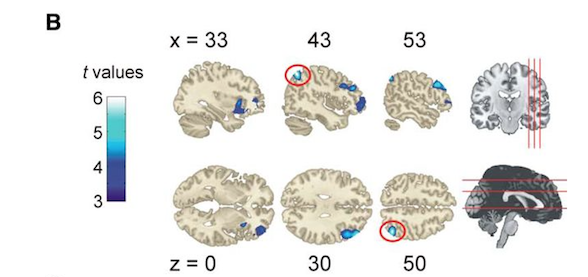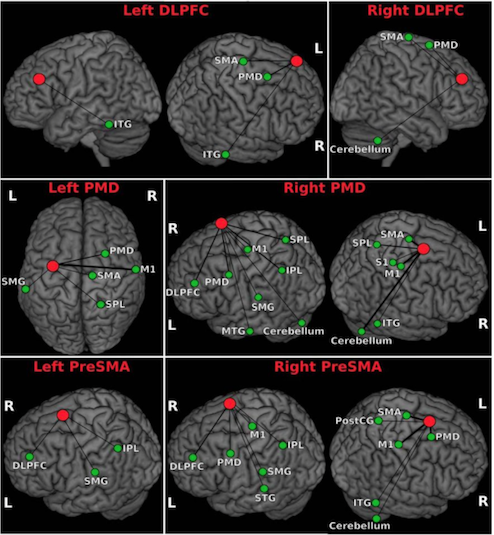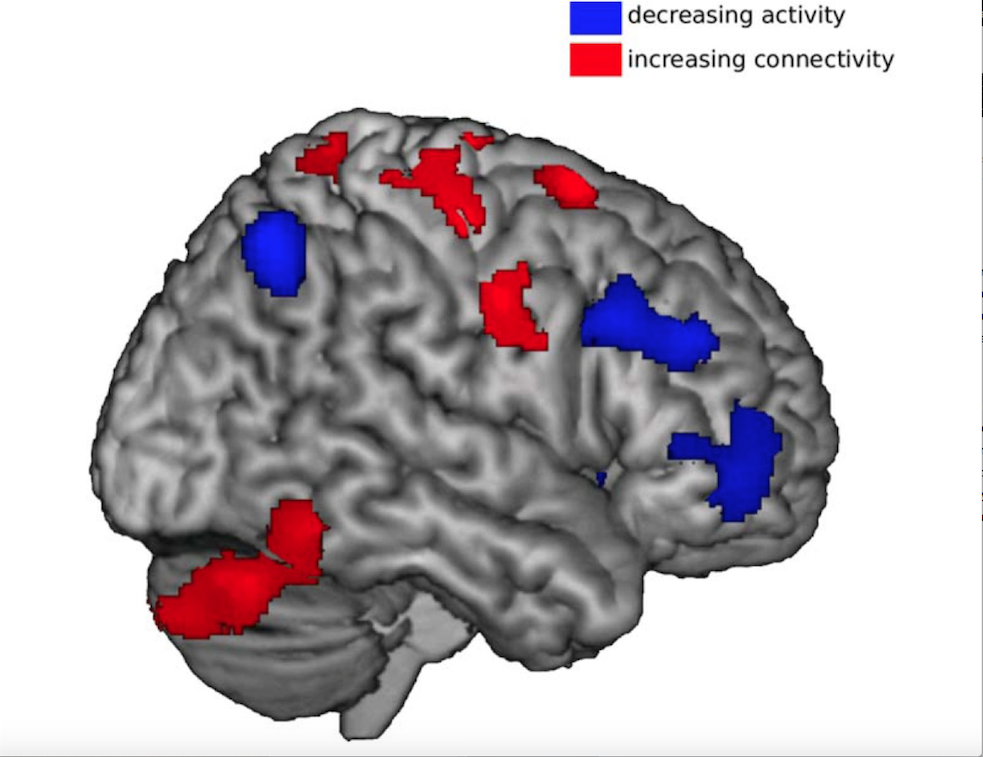Title of paper under discussion
Connecting to Create: Expertise in Musical Improvisation Is Associated with Increased Functional Connectivity between Premotor and Prefrontal Areas
Authors
Ana Luísa Pinho, Örjan de Manzano, Peter Fransson, Helene Eriksson and Fredrik Ullén
Journal
Journal of Neuroscience, 30 April 2014, 34 (18) 6156-6163
Link to original paper (open access)
Overview
This Swedish project set out to discover the effects of improvisation training on a musician’s brain. Using fMRI (functional magnetic resonance imagery) to scan the brains of pianists while they improvised, the researchers found two changes associated with the more experienced improvisers: 1) less activity in the “executive” cortical areas of the brain (suggesting that even creative behaviour can be automated) and 2) greater connectivity between various neural circuits involved in creative performance, allowing for “more efficient exchange of information” within the brain’s creative networks.
Introduction
Previous studies into musical creativity have shown that certain areas in an improviser’s brain, especially in the prefrontal and premotor regions, “light up” during their performances. These areas, according to the authors, seem to be involved in skills such as “attention to action, response generation, action planning/monitoring and inhibition of repetitive responses”. Studies also suggest that if asked to improvise rather than play a prepared work, a musician’s “executive” circuits (in the frontoparietal cortical region of the brain) become more active.
The researchers of this present paper posed the question: can the creative neural pathways be ‘optimised’ by systematic training? In other words, can creativity become partly automated? If so, researchers would expect to see in the more experienced improvisers: 1) less activity in “executive” frontoparietal brain areas, as their creativity had become more automated than that of their less-trained improviser colleagues and so needed less real-time conscious decision making and 2) more functional connectivity between the areas (e.g. in the prefrontal and premotor regions) associated with creative performance.
Method
39 right-handed pianists were asked to fill out a questionnaire estimating how many hours experience they had at piano-playing, and how many of those hours had been spent improvising. Each pianist in turn then entered the fMRI scanner, free enough to play a one-octave keyboard with the right hand. Each was asked to improvise in various ways (e.g. happy, fearful, tonal, atonal) and between each improvisation they were given a visual distraction task to “clear their heads” of the previous take.
Analysis
Brain activity during the improvisations was constantly monitored by the fMRI scanner. To look more specifically at connectivity between different brain regions the researchers took these activity scans and nominated six “seed” regions from the prefrontal and premotor areas known to “light up” during improvisation: the left and right dorsolateral prefrontal cortex (DLPFC), the left and right dorsal premotor area (PMA), and the left and right presupplementary motor area (PreSMA). They looked for correlations in activity between these “seed” areas and other areas during improvisation: the more consistent the correlation between two areas, the more they were assumed to be displaying “functional connectivity”.
Results
1) During improvisation, several brain areas were found to be less active in pianists with lots of improvisation experience compared with colleagues with little improvisation experience. This brain scan figure shows that difference by colouring the relevant regions in varying shades of blue. The darker the blue, the bigger the difference in activity between highly trained and lesser trained improvisers.

The researchers identified these regions as “frontoparietal executive cortical areas”: the dorsolateral prefrontal cortex, the anterior insula, the inferior frontal gyrus and angular gyrus.
2) The improvisers’ brains also showed connectivity between prefrontal/premotor “seed” areas and various other areas of the brain; the higher their improvisation experience, the stronger the connectivity. In this figure the “seed” areas are marked with red dots and the areas that showed such connectivity are marked with green dots:

The areas of high functional connectivity (i.e. the red dots and the green dots) were identified as being within prefrontal, premotor and motor regions of the brain.
Discussion
Previous research has looked at changes induced in brains by all sorts of musical training, and at brain activity as a musician improvises; but this was the first science paper to investigate changes in the brain specifically brought about by a training in improvisation (and independent of classical piano experience and age).
Those changes are nicely presented altogether in this figure below, effectively comparing the brain of a highly trained improviser to that of a novice one. The blue regions are where higher improvisation experience is related to lower brain activity (reflecting the idea that creativity has become more automated) and the red regions are where such experience is related to increased brain connectivity (reflecting “a more efficient integration of representations of musical structures at different levels of abstraction”).

Coda
Duke Ellington, Piano Improvisation no.1 from “Piano in the Foreground”, Columbia Records